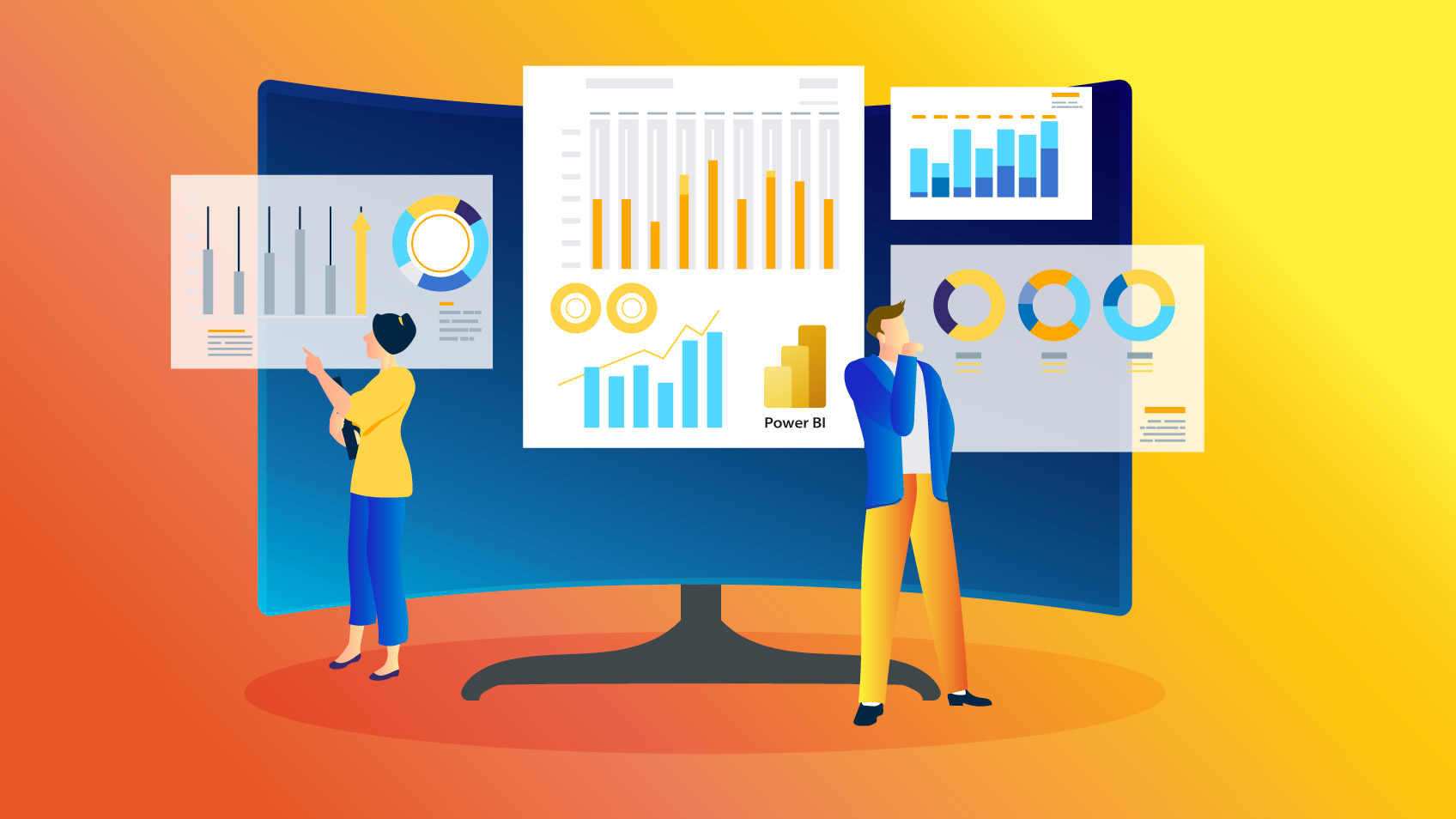In the current business world the importance of data is an asset that can either make or break an enterprise. Power BI and Microsoft Fabric are powerful tools that companies make use of to maximize the value of data. These platforms form the basis of business intelligence, and when they are combined with Azure Data Factory, they can be a force that is unstoppable in data analysis and decision-making.
Power BI Your Business Intelligence Companion
Power BI is a tool for business intelligence from Microsoft that helps organizations visualize their data and share information. Power BI allows users to build interactive dashboards and reports, transforming raw data into actionable data.

Power BI can be tailored to suit your needs no matter if you’re starting out or are a big company. It is able to seamlessly integrate with various data sources that make it simpler to consolidate information from multiple platforms and databases. Even non-technical users are able to quickly produce meaningful reports and analyses with its intuitive drag-and-drop interface.
Power BI supports real-time processing of data to ensure that you are always updated with the most recent information. It provides a variety of visualizations, allowing you to represent data in the most digestible and appealing way. The possibility of sharing and collaboration data with colleagues helps in making better decisions and creates a culture of data-driven decision-making in your workplace.
Microsoft Fabric: The weaving of data Excel
Microsoft Fabric is the fundamental framework that connects and manages data across various Microsoft services. It is the fabric that converts your data an easily accessible entity. This allows businesses to gain insight fast.
In a world where businesses are faced with ever-growing data volumes, Microsoft Fabric provides the basis for data consistency and integrity. Microsoft Fabric integrates with a variety of services, from Azure Data Lake Storage, Azure SQL Data Warehouse, and Power BI. This interconnectedness ensures that data flows smoothly and that insights can be drawn from multiple sources.
The flexibility of Microsoft Fabric is particularly evident in its data transformation capabilities. Use it to clean up and prepare data to be analysed. It is also possible to use it to make sure that data is in line to the policies of your company’s data governance. Microsoft Fabric is the framework used to ensure that your data is reliable and reliable for analysis.
Azure Data Factory – The Gateway to Data Transformation
Azure Data Factory is another essential component in the modern business intelligence landscape. It’s a cloud-based data integration service that permits you to create, schedule and manage data-driven processes. By orchestrating data movement as well as transform data, Azure Data Factory paves the way for meaningful insight.
Azure Data Factory offers several strengths, including the capability to connect to various data sources. It doesn’t matter whether your data is hosted in the cloud or on your premises It can be integrated easily to provide a comprehensive picture of your data ecosystem. The platform is able to handle batches of processing, real-time data streams and big data analytics. This makes it suitable for various use cases.
Azure Data Factory has a visual user interface that makes it easier for designing data pipelines. Even if you’re not a programmer, it’s simple to create the schedule, monitor and control of data pipelines. This allows business users to manage their data integration process and allows for self-service data preparation.
The Power Trio: Power BI, Microsoft Fabric, and Azure Data Factory
If Power BI, Microsoft Fabric, and Azure Data Factory come together in a dynamo trio that can revolutionize your data analytics initiatives. What they can do:
1. Data Integration Azure Data Factory connects to a variety of data sources, ensuring that the data you have is accessible. Microsoft Fabric orchestrates the data from various services by using this data integration feature. This means that the data you have properly structured clean, filtered, and ready for analysis using Power BI.
2. Data Transformation: Microsoft Fabric plays a essential role in data transformation by allowing you to modify your data to meet your analytical needs. Fabric is a powerful tool to transform data, data cleansing and data manipulation.
3. Data Visualization: Once your data is well-organized and is ready, Power BI takes over. Power BI enables you to produce visually appealing reports and dashboards that make the most complex data understandable. These insights can be shared with your team members to enable data-driven decision-making.
4. Scalability: Azure Data Factory is capable of scaling to accommodate growing data volumes. Power BI combined with Microsoft Fabric provides solid data as your business expands.
5. Power BI & Azure Data Factory provides real-time insights that is vital for a fast and efficient decision making.
Conclusion
To be competitive in the business intelligence world businesses must utilize data effectively. Power BI combined with Microsoft Fabric and Azure Data Factory can take your business analytics to a new level. These three components can help you achieve amazing visualizations that improve data consistency and streamline processes. Discover the potential of your data with the help of business intelligence.